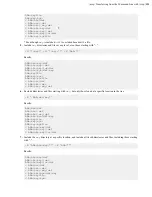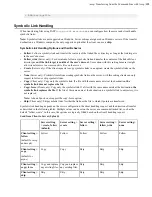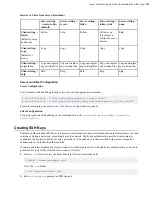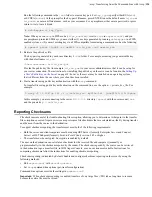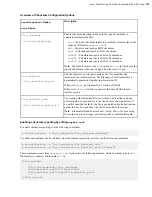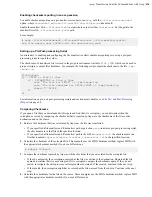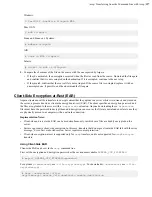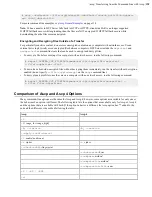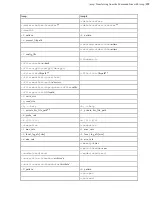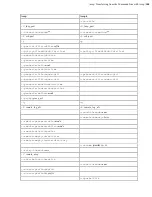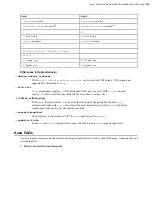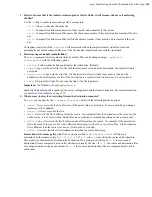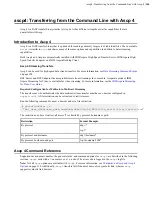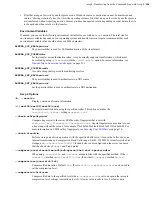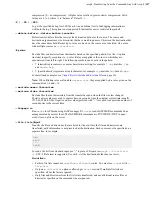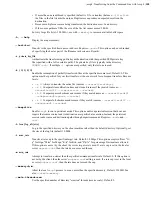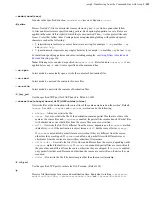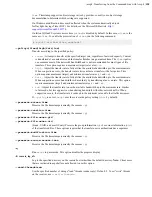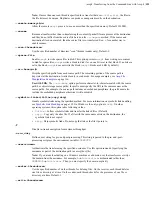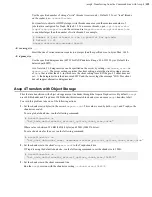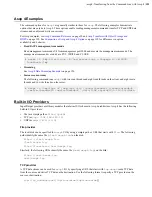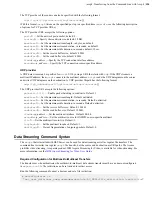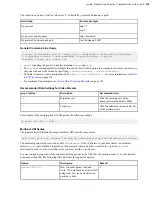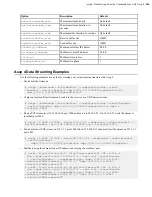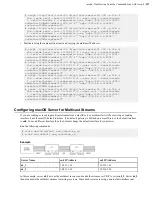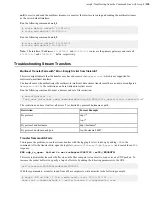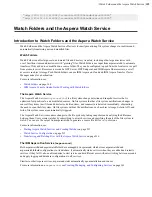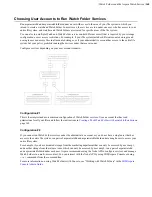
| ascp4: Transferring from the Command Line with Ascp 4 |
145
ascp4 Syntax
ascp4
options
[[
user
@]
srcHost
:]
source_file1
[,
source_file2
,...]
[[
user
@]
destHost:
]
dest_path
User
The username of the Aspera transfer user can be specified as part of the as part of the source or destination, whichever
is the remote server or with the
--user
option. If you do not specify a username for the transfer, the local username
is authenticated by default.
Note:
If you are authenticating on a Windows machine as a domain user, the transfer server strips the domain from
the username. For example,
Administrator
is authenticated rather than
DOMAIN\Administrator
. Thus, you
must specify the domain explicitly.
Source and destination paths
• If there are multiple source arguments, then the target path must be a directory.
• To describe filepaths, use single quotes (' ') and forward slashes (/) on all platforms.
• To transfer to the transfer user's docroot, specify "
.
" as the destination.
• Avoid the following characters in filenames:
/ \ " : ' ? > < & * |
.
• If the destination is a symbolic link, then the file is written to the target of the symbolic link. However, if the
symbolic link path is a relative path to a file (not a directory) and a partial file name suffix is configured on the
receiver, then the destination path is relative to the user's home directory. Files within directories that are sent to
symbolic links that use relative paths are not affected.
URI paths:
URI paths are supported, but only with the following restrictions:
• If the source paths are URIs, they must all be in the same cloud storage account. No docroot (download), local
docroot (upload), or source prefix can be specified.
• If a destination path is a URI, no docroot (upload) or local docroot (download) can be specified.
• The special schemes
stdio://
and
stdio-tar://
are supported only on the client side. They cannot be used
as an upload destination or download source.
• If required, specify the URI passphrase as part of the URI or set it as an environment variable
(
ASPERA_SRC_PASS
or
ASPERA_DST_PASS
, depending on the direction of transfer).
UNC paths:
If the server is Windows and the path on the server is a UNC path (a path that points to a shared
directory or file on Windows operating systems) then it can be specified in an
ascp4
command using one of the
following conventions:
1.
UNC path that uses backslashes ( \ )
If the client side is a Windows machine, the UNC path can be used with no alteration. For example,
\
\192.168.0.10\temp
. If the client is not a Windows machine, every backslash in the UNC path must be
replaced with two backslashes. For example,
\\\\192.168.0.10\\temp
.
2.
UNC path that uses forward slashes ( / )
Replace each backslash in the UNC path with a forward slash. For example, if the UNC path is
\
\192.168.0.10\temp
, change it to
//192.168.0.10/temp
. This format can be used with any client-side
operating system.
Required File Access and Permissions
• Sources (for downloads) or destinations (for uploads) on the server must be in the transfer user's docroot or match
one of the transfer user's file restrictions, otherwise the transfer stops and returns an error.
• The transfer user must have sufficient permissions to the sources or destinations, for example write access for the
destination directory, otherwise the transfer stops and returns a permissions error.
• The transfer user must have authorization to do the transfer (upload or download), otherwise the transfer stops and
returns a "management authorization refused" error.

